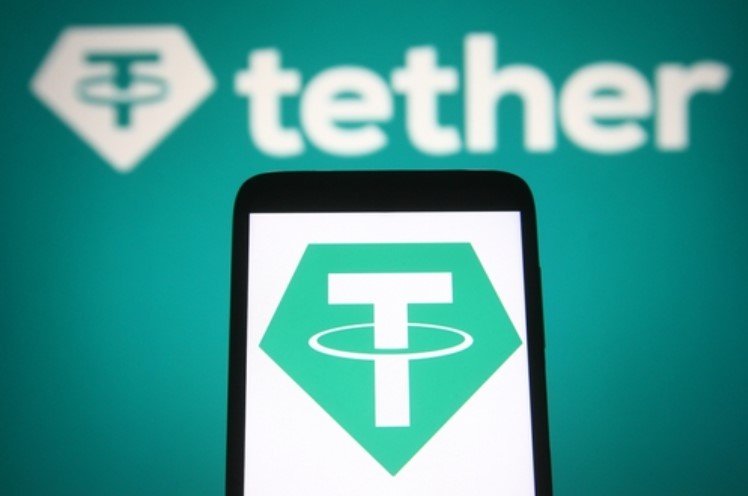From Skepticism to Strategy: NYC Embraces Blockchain’s Civic Potential
Tether Bids Farewell to Bitcoin Omni Layer
(Originally posted on : Crypto News – iGaming.org )
Tether, a well-known stablecoin issuer, recently announced that it was ending support for the Bitcoin Omni Layer version in a statement that echoed across the cryptocurrency ecosystem. This historic move is the result of declining user interest in the original stablecoin variation, one of the first of its type. The team revealed in a statement on August 17 that the Bitcoin Cash BCH and Kusama KSM variations would also be discontinued in addition to the Bitcoin Omni Layer version.
Tether will stop issuing new tokens on platforms including Bitcoin Omni Layer, Kusama, and Bitcoin Cash, as stated in the release. However, the redemption process will be available for at least another year, and during that time, new information about the redemption methods will be published.
New players only. Exclusive 111% Welcome Bonus + 111 Free Spins
Evolving Landscape and Historical Significance
A smart contract system built on top of the Bitcoin blockchain, the Bitcoin Omni Layer has a fascinating historical background. This unique network, known as “Mastercoin,” was introduced in July 2013—a full two years before Ethereum. Tether introduced its stablecoin on the Omni Layer in October 2014, introducing the idea of stablecoins and quickly dominating the industry. As a result of this ascension, stablecoins like BitUSD and NuBits that had come before them were even surpassed.
Recognizing the pivotal role of the Omni Layer Tether in the evolution of the cryptocurrency domain, Tether conveyed, “We understand the significance of this decision, particularly for Omni, as it was the first transport layer that Tether used in 2014. The Omni Layer, built on top of Bitcoin, played a crucial role in Tether’s early journey, and we acknowledge the contributions and innovations the team has made to the crypto landscape.”
Challenges Faced and New Horizons
However, the lack of widely accepted tokens and the availability of USDT on alternate blockchains presented difficulties for the Omni Layer. As a result, bitcoin exchanges avoided Omni and turned to alternative transport layers. This change caused USDT Omni’s usage to fall, which finally forced Tether to stop issuing it.
New players only. Exclusive Welcome Bonus of up to $2,500
Should its utility regain popularity, the business said it would reissue the Omni Layer version. Tether also revealed its continuous efforts in the field of innovation, actively working on a cutting-edge Bitcoin smart contract technology codenamed “RGB.” Upon completed, Tether plans to use RGB technology to reestablish a version of its stablecoin on the Bitcoin blockchain, signaling a revival of Tether’s influence in the constantly changing cryptocurrency environment.
Competition and the Shifting Landscape
Stablecoins have seen a rise in competition in 2023, essentially threatening Tether’s previous hegemony. Examples include the July 26 listing of First Digital USD (FDUSD) on Binance and the August 7 launch of PayPal USD (PYUSD) by PayPal. The bitcoin market continues to demonstrate its flexibility as Tether adjusts to new trends and attempts to reclaim its position.
Tether’s decision to retire its initial Bitcoin Omni Layer version signals a fundamental change in the cryptocurrency industry in an environment defined by innovation and competition. While saying goodbye to the past, the firm is looking forward to reviving its presence through innovative solutions and tactical adjustments, assuring its continuing relevance in the developing digital economy.







 Bitcoin
Bitcoin  Ethereum
Ethereum  Tether
Tether  XRP
XRP  Solana
Solana  USDC
USDC  TRON
TRON  Dogecoin
Dogecoin  Lido Staked Ether
Lido Staked Ether  Cardano
Cardano  Wrapped Bitcoin
Wrapped Bitcoin  Hyperliquid
Hyperliquid  Wrapped stETH
Wrapped stETH  Bitcoin Cash
Bitcoin Cash  Sui
Sui  Chainlink
Chainlink  LEO Token
LEO Token  Avalanche
Avalanche  Stellar
Stellar  USDS
USDS  Toncoin
Toncoin  WhiteBIT Coin
WhiteBIT Coin  Shiba Inu
Shiba Inu  WETH
WETH  Litecoin
Litecoin  Wrapped eETH
Wrapped eETH  Binance Bridged USDT (BNB Smart Chain)
Binance Bridged USDT (BNB Smart Chain)  Hedera
Hedera  Monero
Monero  Bitget Token
Bitget Token  Ethena USDe
Ethena USDe  Polkadot
Polkadot  Coinbase Wrapped BTC
Coinbase Wrapped BTC  Uniswap
Uniswap  Pi Network
Pi Network  Pepe
Pepe  Aave
Aave  Dai
Dai  Ethena Staked USDe
Ethena Staked USDe  Aptos
Aptos  OKB
OKB  Bittensor
Bittensor  BlackRock USD Institutional Digital Liquidity Fund
BlackRock USD Institutional Digital Liquidity Fund  Jito Staked SOL
Jito Staked SOL  NEAR Protocol
NEAR Protocol  Internet Computer
Internet Computer  Cronos
Cronos  Ethereum Classic
Ethereum Classic  sUSDS
sUSDS  Ondo
Ondo  USD1
USD1  Tokenize Xchange
Tokenize Xchange  Mantle
Mantle  Gate
Gate  Official Trump
Official Trump  Cosmos Hub
Cosmos Hub  VeChain
VeChain  Artificial Superintelligence Alliance
Artificial Superintelligence Alliance  Lombard Staked BTC
Lombard Staked BTC  Sky
Sky  Render
Render  POL (ex-MATIC)
POL (ex-MATIC)  Ethena
Ethena  Sei
Sei  Quant
Quant  Algorand
Algorand  Jupiter Perpetuals Liquidity Provider Token
Jupiter Perpetuals Liquidity Provider Token  Arbitrum
Arbitrum  Filecoin
Filecoin  Binance-Peg WETH
Binance-Peg WETH  USDtb
USDtb  Worldcoin
Worldcoin  KuCoin
KuCoin  Binance Staked SOL
Binance Staked SOL  USDT0
USDT0  Jupiter
Jupiter  NEXO
NEXO  SPX6900
SPX6900  Rocket Pool ETH
Rocket Pool ETH  Bonk
Bonk  Polygon Bridged USDT (Polygon)
Polygon Bridged USDT (Polygon)  Fartcoin
Fartcoin  Injective
Injective  Stacks
Stacks  Binance Bridged USDC (BNB Smart Chain)
Binance Bridged USDC (BNB Smart Chain)  Celestia
Celestia  Kaia
Kaia  PayPal USD
PayPal USD  Sonic
Sonic  Virtuals Protocol
Virtuals Protocol  Optimism
Optimism  Mantle Staked Ether
Mantle Staked Ether  Solv Protocol BTC
Solv Protocol BTC